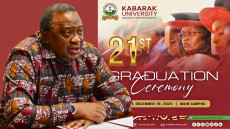- The most uncommon type of ambidexterity is the ability to consistently and proficiently use both hands. These individuals are referred to as "ambidextral," which is defined as "pertaining equally to the right-hand side and the left-hand side."
- People who utilize both hands equally and have no dominant hand are said to be "ambisinistral," but neither hand is particularly powerful. According to Mental Floss, both hands are roughly equivalent to a right-handed person's left hand in terms of competence.
Ever wondered why some individuals use both hands to perform certain tasks and wondered how and why this came about?
Or are you one of those individuals who use both hands to perform certain tasks as stated above or are just fascinated by such happenings?
Let’s find out why this happens and the medical reasons behind it, what tradition says about it, and what you need to know.
Left/right hand combined?
The most uncommon type of ambidexterity is the ability to consistently and proficiently use both hands. These individuals are referred to as "ambidextral," which is defined as "pertaining equally to the right-hand side and the left-hand side."
Others, though, don't have the same dexterity in both hands and prefer to use their right hand for some tasks while using their left for others.
People who utilize both hands equally and have no dominant hand are said to be "ambisinistral," but neither hand is particularly powerful. According to Mental Floss, both hands are roughly equivalent to a right-handed person's left hand in terms of competence.
Many ambidextrous people began as lefties.
Given how similar ambidextrous and left-handed brains are, it makes sense that one would initially be the other.
Due to the left hand's links in the Bible with witchcraft and demons, left-handedness was stigmatized for hundreds of years.
The Latin word "sinistra," which originally meant "left," is where the word "sinister" derives from.
From the Middle Ages until the 21st century, many left-handed persons encountered pressure to use their right hands instead and ultimately developed ambidexterity.
While others might develop ambidexterity as a result of harm to their dominant hand.
Here are some reasons behind ambidexterity:
**1. Genetic Factors: Some level of ambidexterity might be influenced by genetics.
Research suggests that handedness has a genetic component, and certain genes may play a role in determining whether a person becomes left-handed, right-handed, or ambidextrous.
**2. Brain Plasticity: During brain development, there is a period of plasticity when neural connections are being formed.
If there is balanced input and training for both hands during this critical period, it might lead to increased ambidexterity.
**3. Training and Practice: Intentional practice and training can enhance ambidexterity.
Regular practice using the non-dominant hand can lead to increased skill and coordination over time.
This is often seen in activities like sports or musical instruments.
**4. Injury or Disability: In some cases, individuals may become ambidextrous due to an injury or disability that limits the use of their dominant hand.
In response, they might develop skills with their non-dominant hand out of necessity.
**5. Cultural and Societal Influences: Some societies and cultures place more emphasis on using both hands for various tasks, which can contribute to the development of ambidextrous skills.
In terms of traditions, today's world, and religion:
**1. Traditions and Societal Views: Some cultures and traditions historically encouraged or required the use of both hands for specific activities.
For example, in some Asian cultures, it's common to use chopsticks with both hands, which might contribute to a certain level of ambidexterity.
Additionally, some sports and activities, such as fencing or martial arts, may require a level of ambidexterity for better performance.
**2. Today's World and Ambidexterity: In today's world, ambidexterity can be advantageous in various fields.
For instance, in the realm of sports, an ambidextrous athlete might have an edge due to increased versatility and unpredictability.
In certain professions like surgery or art, ambidexterity can also be an asset.
**3. Religious Perspectives: Different religions may have varying views on ambidexterity, but most do not explicitly address the issue.
Generally, religious teachings focus more on ethical and moral principles rather than physical abilities.
As such, ambidexterity is not likely to be a central concern in religious contexts.
In summary, ambidexterity has a blend of genetic, developmental, and cultural factors contributing to its occurrence.
While some traditions and sports might encourage ambidexterity, and it can be advantageous in certain fields, religious perspectives generally don't have much to say about this ability.


-1766009103-md.jpeg)





-1766009103-sm.jpeg)



